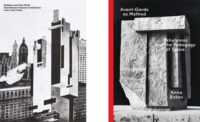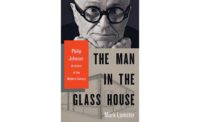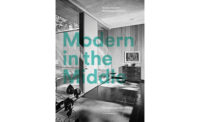The architect Albert Kahn, born in 1869 in Rhaunen, Germany, was known as “the man who built Detroit.” Between 1902 and his death in 1942, his firm, based in the city, was responsible for some 2,000 built projects, including—famously—car factories for Packard, Ford, Hudson, Studebaker, and Chrysler. Kahn’s plants also produced much of the battle materiel for World War I and II, as Michael H. Hodges, The Detroit News’s fine-arts reporter and an amateur photographer, notes in his readable, well-documented book. Yet even though Kahn’s firm survives to this day, the founder was largely forgotten after the last war. This book is meant to give the man his due, and it’s quite a tale.
Kahn was the oldest of eight children born to poor German-Jewish parents who immigrated to Detroit in 1881, and he never finished elementary school. His father, a rabbi by training, opened a restaurant, where his mother cooked (they lived upstairs). When a fire consumed both the restaurant and the living quarters, Albert, at age 12 the only one in the family who spoke English, became the breadwinner. He got a job as a gofer in an architecture firm and, for extra money, mucked out horse stalls before work.
Then luck arrived. He joined the architecture office of Mason and Rice, whose principal, George D. Mason, mentored him. Kahn soon became a superb draftsman. He was energetic, determined, talented, and curious; at 19, he became the firm’s “house designer.” When he was 21, the young apprentice won a $500 traveling scholarship from American Architect and Building News and set off to study and sketch masterpieces of architecture and vernacular buildings in Europe.
Kahn returned to Detroit and his old firm, where he was soon named chief designer. By 1902, he had founded Albert Kahn Associates, enlisting his brother Julius, by then an engineer, to join him. Julius experimented with creating stronger reinforced concrete and got a patent on his system, which soon enabled the firm to build fireproof concrete factories with open loft areas, wide spans, and glass walls. After Packard (10 buildings beginning in 1905) came the Ford plants in Highland Park and Dearborn (and eventually the River Rouge complex) and the General Motors Headquarters (now called Cadillac Place) in midtown Detroit. He did the Argonaut building in downtown Detroit, which housed the GM Tech Center, and the celebrated GM exposition building at the 1933–34 Century of Progress World’s Fair in Chicago.
In addition to car plants, Kahn created hospitals, synagogues, a conservatory, and even grand suburban houses in various styles for Detroit’s automakers, including the Edsel & Eleanor Ford House (1926). At the University of Michigan alone, Kahn designed more than two dozen buildings (or additions); in downtown Detroit, he designed the Fisher Building, an Art Deco landmark, the Detroit Athletic Club, the Kresge Building (now K-Mart) and the Detroit Police Headquarters, among others.
During World War I, the firm executed $200 million in construction for the U.S. government. What is less known is that, in 1917, Kahn built a tractor plant in the USSR, which led to his being hired as a consultant to the Soviets. Kahn opened an office in Moscow and, between 1929 and 1932, was responsible for more than 500 factories—which later became production plants that helped to defeat the Nazis.
In 1941, Kahn was busy (he was nicknamed “the human steam engine”) equipping the United States for the Second World War, and reportedly employed 450 architects and engineers.
When he died of heart problems in December 1942, the New York Times called him “the fastest and most prolific builder of modern industrial plants in the world.” Lost in the obituary, Hodges notes, was attention to Kahn’s considerable nonindustrial work. The author also explores his subject’s dedication to work, family, and friends, and his ability to buck widespread antisemitism. And it is heartening to learn that his Fisher Building, New Center Building, the Argonaut Building, and Detroit Free Press building, long neglected, have come back to life.







Post a comment to this article
Report Abusive Comment